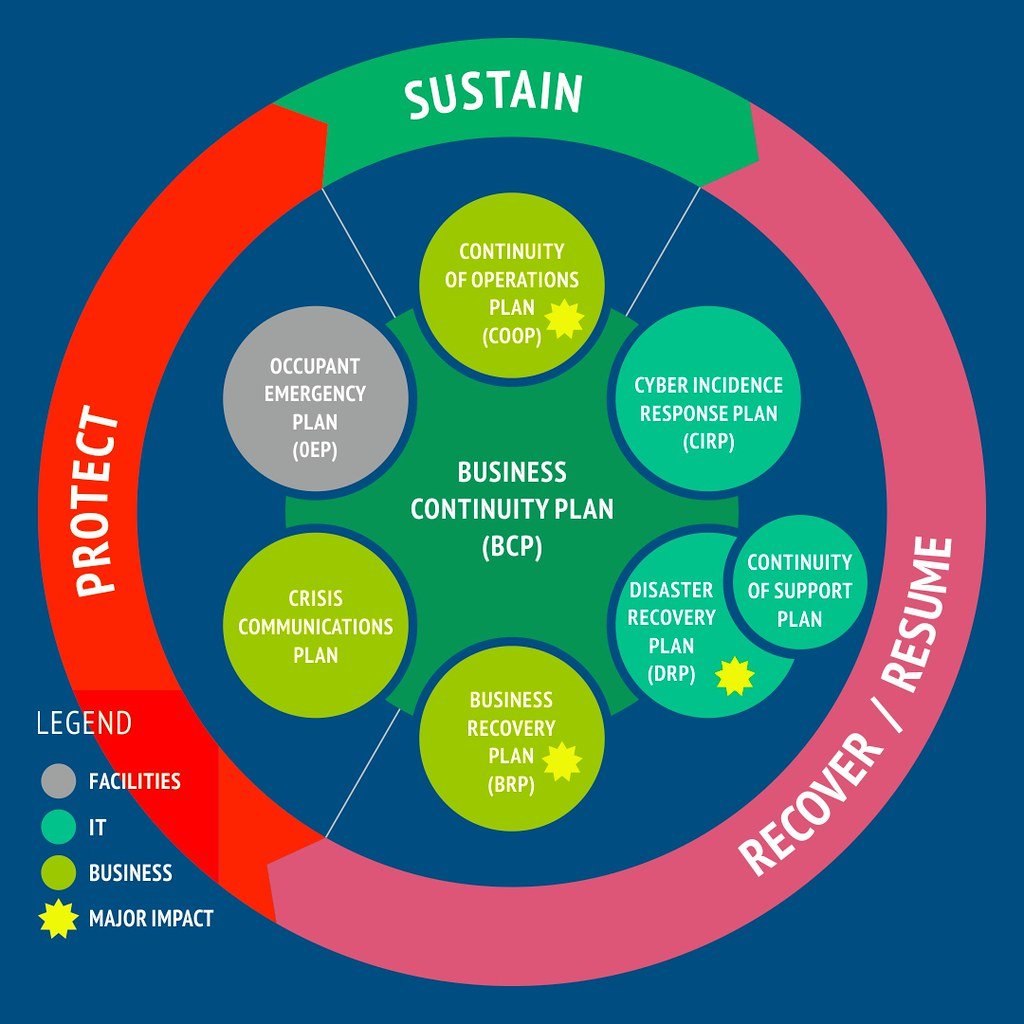Business continuity planning for climate change
Business continuity vs disaster recovery plan
Bastamanography, licensed under CC BY-NC-SA 2.0
Business continuity refers to the ability of an organisation to retain functionality – to maintain ‘business as usual’ - during and after a disruptive incident.
Good business continuity planning practices and related governance provide assurance that there are processes in place to deal with incidents that may damage buildings or affect customers or service users.
The impacts of climate change on an organisation, its functionality and its reputation, can be assessed and adapted to through good business continuity planning and procedures.
The first step for the development of a climate change business continuity plan should be to assess exposure and vulnerability to the direct impacts of heatwaves and floods on a business or organisation.
Importantly, climate change may not trigger an ‘incident’ as defined in business continuity plans but may still cause significant risks to the day-to-day operations of an organisation. For instance, the global impacts of climate change might have knock-on effects on supply chains. Assessments of these broader risks can be much more challenging, but should be captured in risk registers. If possible, they should be regularly reviewed by relevant groups and committees with an aim to assist in the building of resilience as we learn more about the indirect impacts of climate change.
Common risk management and business continuity themes
There are some notable themes that influence how organisations approach business continuity, risk management, and climate resilience:
The Covid-19 pandemic has caused organisations to scrutinise their business continuity plans to a greater extent and prompted more discussion around what possible scenarios could be captured.
Many business continuity plans include incidents that may arise as a result of climate change (e.g. increased severe weather events), but do not necessarily attribute these risks to climate change, or recognise their increasing likelihood.
Risk registers do not routinely capture pressing climate related risks but are more focused on reputational risks as a result of not achieving net zero carbon targets.
There is a need, therefore, to pay greater attention to climate hazards and vulnerability in standard risk governance procedures and planning.
Climate change may not trigger an ‘incident’ as defined in business continuity plans but may still cause significant risks to the day-to-day operations of an organisation. For instance, the global impacts of climate change might have knock-on effects on supply chains.
Climate resilience and adaptation
Strong business continuity plans aim to minimise the effect that incidents will have on key systems and processes.
Effective plans should also include operational actions to build resilience prior to an incident occurring. For instance, if an organisation is anticipating supply chain issues, they might take action to increase their use of local suppliers. This is particularly important for climate change, as the potential results of 1.5C warming are irreversible, and the effects will continue to compound for years to come.
Organisations need to start thinking about how to mitigate these effects as soon as possible.
Business Continuity and Resilience - steps to be taken (reproduced with permission by UNIAC)
Business continuity planning for universities
Companies such as Uniac provide internal audit services for higher education institutions around the UK, including work with the two Manchester-based universities. They agree an annual programme of in-depth reviews, which can include business continuity plans and assessments on the efficacy of the institution’s risk management processes.
Uniac has worked with another university that reports annually on the use and effectiveness of their Incident Management Plan which supports and co-ordinates responses between devolved business continuity plans and emergency procedures at a directorate and operational level.
After the Covid-19 pandemic, the institution is introducing new work streams to strengthen emergency and resilience planning. These actions include:
A review of the Incident Management Plan, building on lessons learned from its use over the last year.
Centralised reviews of devolved business continuity plans to identify good practice and to support local areas in their own resilience planning.
Training for key staff involved in enacting resilience procedures and senior management in horizon scanning and scenario planning, including for the impacts of climate change.
For a university perspective, this horizon-scanning work will capture how the long-term socioeconomic effects of climate change may have a knock-on effect, for instance, on international recruitment or on the university’s supply chains.



